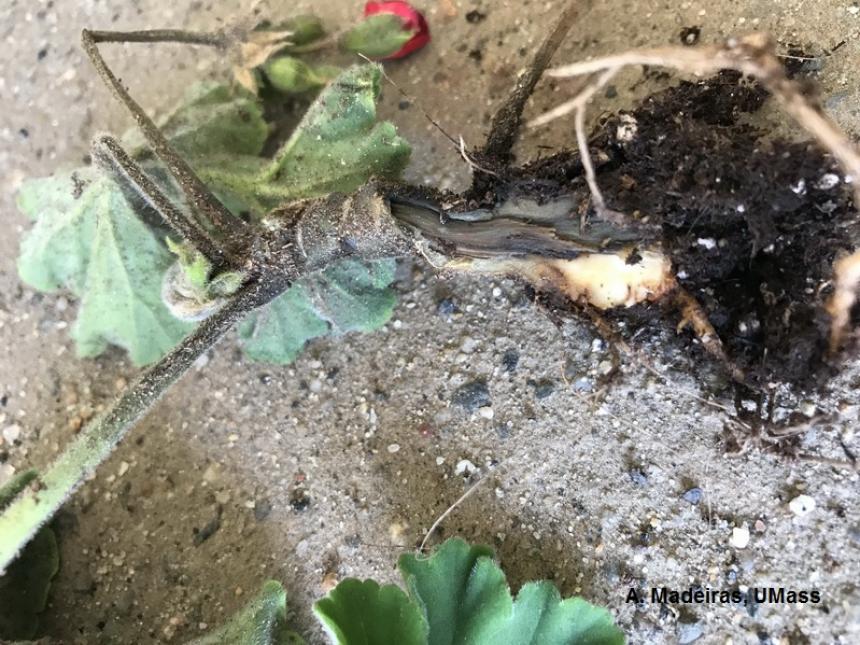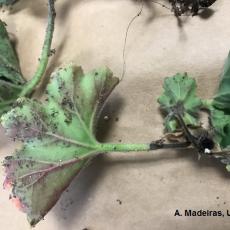The first symptom of black leg is brown, water-soaked tissue at the base of the cutting. This turns shiny black and can quickly spread 3 or 4 inches up the cutting stem. Eventually the tops of affected cuttings and plants wilt, yellow and die. Fungus gnat larvae are often found in infected cuttings.
Several different species of Pythium have been found to cause black leg. These soil borne fungi also cause damping off of seedlings. Black leg is favored by those environmental factors that are not favorable for plant growth. Less than optimal cutting quality, high growing medium moisture or low oxygen content (found with compaction) of the propagation medium are important contributing factors. Excess soluble salts in the growing medium that injure and weaken root tissues can also lead to infection.
Black leg is sometimes confused with symptoms caused by Botrytis blight. Botrytis causes brown, water-soaked cankers similar to black leg, however the stem lesions caused by Botrytis typically remain a dull dark brown. Botrytis can develop on any part of the stem, while Pythium stem rot most commonly develops on that part of the stem in contact with the soil.
Pythium is a natural inhabitant of the soil and can survive there indefinitely as well as in debris in the greenhouse. Growers having re-occurring problems with black leg , should review their overall propagation and production practices including size of cuttings, fertilizing, watering and media handling. Good sanitation is crucial for prevention. Keep hose ends off the floor and avoid contaminating growing medium. Apply appropriate fungicides as a sprench (drench plus spray to contact stems). Always alternate fungicide applications by active ingredient class (FRAC group). Many greenhouse isolates are resistant to mefenoxam (Subdue).
Suspicious plants can be diagnosed through your University diagnostic lab or through a private diagnostic lab.

